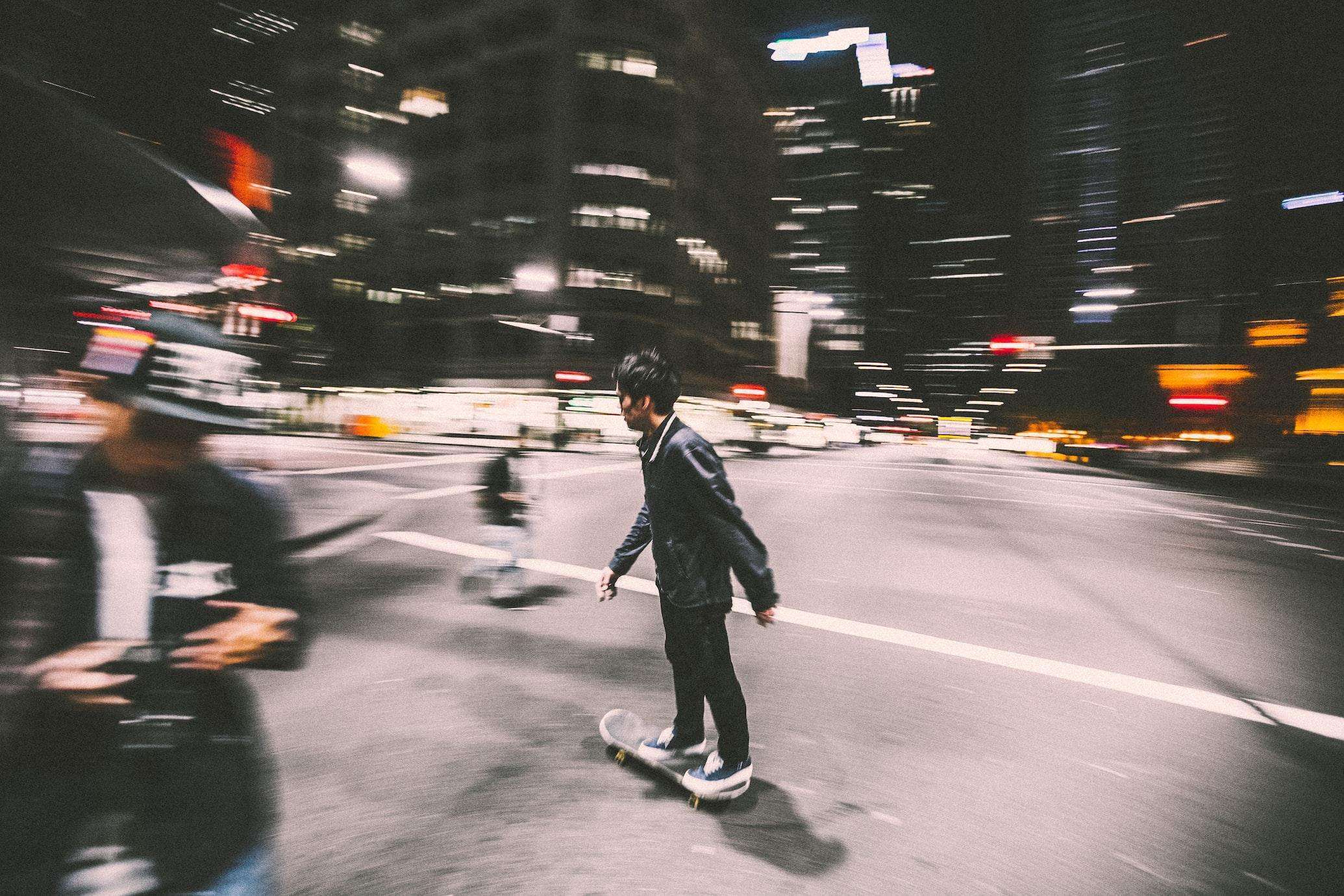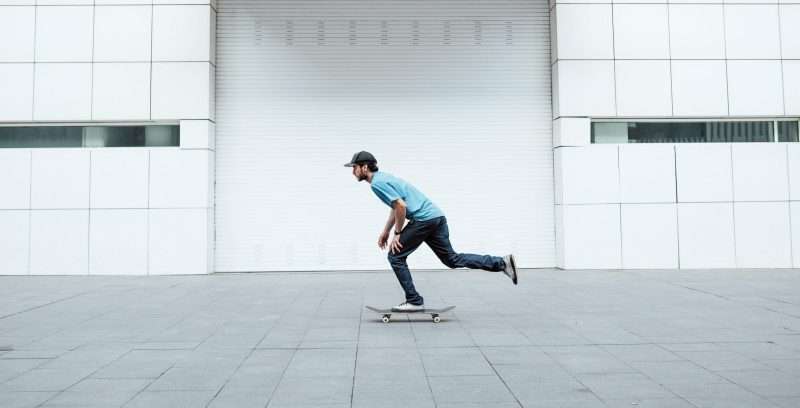Skating is a great way to get some exercise, wind down after a long day, and even run errands around town. However, it’s important to have an understanding of the rules of traffic when choosing to skate as you go about your day. Knowing these rules can help ensure that both skaters and drivers stick with safety protocols at all times so everyone has an enjoyable skating experience. Whether you are hitting skate parks in your area or sporting rollerblades on city streets, reviewing these 6 essential tips will make sure you know the laws and stay safe while skating!
Overview of Skating Traffic Laws
Skating with skateboards, whether on inline or roller skates, has seen a surge in popularity in recent years.. With this increase in skaters, it is important to be aware of the traffic laws that apply to them. Many people mistakenly believe that skating is exempt from the rules of the road, but in reality, skaters are subject to many of the same laws as bicyclists and pedestrians.
For example, in most places, skaters are required to yield to pedestrians, use hand signals when making turns, and stay on the right-hand side of the road. All traffic participants should also be well aware that large trucks are far heavier than most traditional motor vehicles, and the size difference can play an enormous role in the damage caused, as seen at https://thepatelfirm.com/waco-truck-accident-lawyer article. By following these tips, skaters can help ensure their own safety and that of others sharing the road.
Know Your Skateboarding Rights When It Comes to Traffic
Skateboarding is a fun and exhilarating activity that can be enjoyed by people of all ages. However, it is important to know your skateboarding rights when it comes to traffic. As a skateboarder, you have the same rights as bicyclists and motorists on the road. You are allowed to skate on the street as long as you follow the same traffic laws as everyone else. This means stopping at stop signs, yielding to pedestrians, and using hand signals to indicate turns. It is important to stay visible and wear reflective clothing when skating at night or in low-light conditions.
By knowing your rights and following the rules of the road, you can enjoy your skateboarding experience safely and responsibly.
Statistics on Skateboarding Accidents and How to Stay Safe
Skateboarding is a popular activity that many people enjoy, but it can also be dangerous if proper safety precautions are not taken. According to statistics, skateboarding accidents account for a significant number of ER visits each year. The most common injuries include broken bones, sprains, and concussions. To stay safe while skateboarding, it is essential to wear protective gear such as helmets, knee pads, and wrist guards.
It’s also crucial to skateboard in areas designated for the sport and to avoid skating in crowded areas where collisions can occur. Overall, by taking the necessary safety measures, you can reduce your risk of injury while still enjoying the thrill of skateboarding.
Tips for Skateboarders to Avoid Traffic-related Injuries
Although skateboarding can be amazing, it can also be risky, especially when there is traffic. Skateboarders should always be aware of their surroundings and attempt to stay away from crowded areas wherever feasible to prevent traffic-related injuries. Wearing the proper safety equipment, such as elbow and knee pads, helmets, and protective clothing, can also dramatically lower the chance of harm in the event of an accident. Along with adhering to traffic laws, it’s essential to skateboard while avoiding distractions like checking your phone and halting at stop signs and red lights. Skateboarders can safely indulge in their love while avoiding injuries from traffic by taking these steps.
Benefits of Obeying Traffic Laws while Skating
Skating can be a thrilling and liberating experience, but it is also important to remember the rules of the road. Obeying traffic laws while skating, such as following speed limits and stopping at stop signs, not only ensures a safer journey but also upholds respect for drivers and pedestrians. By being a responsible skater, you can set an example for others and foster a positive relationship between skaters and the community. Plus, by avoiding accidents and injuries, you can keep enjoying the sport you love without any setbacks. So next time you head out for a skate, remember to obey traffic laws and stay safe on the roads.
Other Vital Considerations when Skating in Traffic

When you’re skating in traffic, it’s not just your own safety you need to think about – you also need to consider the safety of others using the road. It’s important to be aware of your surroundings and keep an eye out for any hazards that may cause danger to yourself or others. One crucial consideration is pedestrian traffic – be sure to avoid any collisions with people walking on the pavement.
Additionally, be aware of the drivers around you and their reactions to your presence. It’s important to obey traffic signals and rules to avoid any accidents, and always stay alert and aware while skating in areas with high traffic flow. By being a responsible and cautious skater, you can help ensure the safety of yourself and others on the road.
What Can You Do To Make It Safe?
To ensure a safe skateboarding experience, it is important to wear appropriate safety gear such as helmets and knee pads. Additionally, skaters should always obey traffic laws and be aware of their surroundings at all times. Skateboarders also need to avoid distractions like looking at their phones or listening to music while skating. Finally, it is essential to skate in designated areas, as this will help avoid accidents or injuries. By following these tips and taking the necessary precautions, you can enjoy the thrill of skateboarding without compromising your safety.
How to Choose Safety Gear?
When it comes to choosing safety gear for skateboarding, there are a few factors you should consider. First, make sure the protective equipment is adequately certified and suitable for skateboarding. Additionally, it’s important to choose safety gear that fits properly – too loose or too tight can both be dangerous. Finally, opt for comfortable materials such as breathable fabrics and padding to ensure a comfortable experience while skating. So, if you are looking for a helmet, knee pads, or elbow pads for skateboarding, be sure to think about all of these factors before making a purchase. With the right safety gear and the right attitude, you can skate safely and confidently.
Check the Gear Before Going Skating
Before you go out skating, it is important to check your gear and make sure everything is in good condition. Inspect the wheels and bearings for any signs of damage, check that the trucks are securely attached to the board, and make sure all bolts and screws are tightened correctly. Additionally, inspect your safety gear like helmets or pads for any tears or damage. By taking the time to do these simple checks, you can ensure your skateboard is in good condition and ready to be enjoyed safely.
Have a Plan for Emergency Situations
It’s also important to remember that when engaging in any sport, especially one with potential hazards, it is essential to have a plan for emergency situations. Skaters should have a basic understanding of first aid and be familiar with the emergency contacts in their area. Additionally, it is wise to carry an emergency contact card on your person at all times so that if something were to happen, you would be able to immediately receive help. By considering these safety measures and planning ahead for any potential emergency situations, you can remain safe while skateboarding.
What Can You Do In Case of Accident; Step By Step Guide
- Remain calm and assess the situation – ensure that everyone is safe and out of danger before you take any further action. If you are stressed, it can impact your ability to make decisions. You can try to take a few deep breaths and count to three before deciding what the next steps are. Additionally, do not move the injured person unless they are in immediate danger. This can cause further injury. The best thing to do is wait for assistance from emergency services.
- Check for signs of injury or trauma – if there are any signs of serious injury, call an ambulance immediately or seek medical attention as soon as possible. For minor injuries, take the necessary steps to treat them. For example, if someone has a small cut, you can use antiseptic and a clean bandage to cover the wound. Or, if there is a sprain or strain, you can use a cold compress to reduce swelling. On the other hand, if you don’t feel comfortable providing medical assistance, it is best to wait for emergency help.
- Report the accident – if an injury has occurred, it is important to notify the proper authorities as soon as possible. Depending on the severity of the incident, this could involve calling an ambulance or filing a report with the local police station. Additionally, you should also inform your skate park if there was one involved in the accident.
- Document the details – it is important to record as many details of the incident as you can including names, contact information, and any statements that were made. This will help if there is an investigation or legal action taken in the future.
- Follow up with medical care – if an injury occurred, it is important to follow up with the proper medical attention. Even if you feel like the injury is minor, it is still best to get checked out by a doctor. Additionally, if there is any legal action taken against you or another party involved in the incident, having documented evidence of your injuries or treatment will be beneficial.
- Take safety precautions for future skates – once the incident has been resolved and medical attention has been received, it is important to take measures to make sure that a similar situation doesn’t happen again. This could involve investing in better safety gear, practicing more precautions when skating, or taking classes to learn the proper skills and techniques.
Having a Word with an Experienced Lawyer Is Always a Good Idea
Accidents can happen regardless of how many safety precautions you take. If you are ever involved in an incident on a skateboard, it is important to seek legal advice. An experienced lawyer will be able to give you the best advice on how to handle the situation and protect your rights. Additionally, they can help guide you through any legal proceedings that may arise if the accident results in any damage or injuries. For instance, if you have been accused of negligence or carelessness, an attorney can help you to prove that the other party was at fault. This will ensure that you are not held liable for any of the damages or injuries caused by the accident. Furthermore, if you sustained any injuries, an attorney can help you to seek compensation for associated medical costs. This is especially true if the incident occurred in a public or private skate park. Ultimately, seeking legal advice after an accident can help to make sure that you are protected and receive the justice that you deserve. So, do not hesitate to reach out for help if you are ever involved in a skateboarding accident.
Overall, while skateboarding in traffic can be a dangerous activity, if you know and understand all the laws, rules, and safety requirements it can be done safely. Knowing the traffic laws governing your area, wearing a helmet, using bright lights at night to alert drivers to your presence, and traveling on streets with bike lanes will help ensure that you stay safe when skating in traffic. Ultimately, being a responsible skateboarder is about taking ownership of our actions, being aware of the risks associated with riding around cars and pedestrians, and being mindful that we have the same rights as other vehicles on the road. Skateboarding is an exhilarating hobby but also requires respect for ourselves and others – especially when it comes to understanding traffic laws. Stay safe out there!



